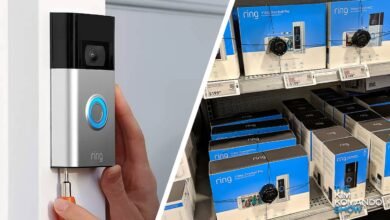Choosing the Right IoT Platform: Tips for Smart Decision-Making

In the rapidly evolving landscape of the Internet of Things (IoT), selecting the right platform is a pivotal decision that can significantly impact the success of your connected device or solution. The choice of an IoT platform is akin to laying the foundation for a smart and interconnected future, where devices seamlessly communicate and collaborate to enhance efficiency and deliver innovative services.
As businesses and industries continue to embrace IoT technologies, the need for a robust and scalable platform becomes increasingly crucial. In this dynamic environment, making an informed decision requires a careful evaluation of various factors to ensure that the chosen IoT platform aligns seamlessly with your specific requirements and business objectives.
Choosing the Right IoT Platform
Choosing the Right IoT Platform: Tips for Smart Decision-Making becomes paramount in navigating the complex array of options available in the IoT ecosystem. Whether you are an enterprise looking to optimize operations, a startup developing cutting-edge IoT devices, or a service provider aiming to deliver innovative solutions, this guide will provide valuable insights into the key considerations and factors that should shape your decision-making process.
From compatibility and security to scalability and analytics capabilities, understanding the nuances of different IoT platforms is essential for unlocking the full potential of your IoT deployment. Join us as we delve into the intricacies of selecting the perfect IoT platform that aligns with your vision, propelling your connected endeavors to new heights.
Understanding Your Needs
Before diving into the selection process, it’s crucial to understand your business needs thoroughly. Identify the specific requirements your IoT implementation must meet and assess factors such as scalability and flexibility.
Read More: Optimizing Supply Chain with IoT: A Practical Approach In 2024
Compatibility and Integration
One of the common pitfalls in choosing an IoT platform is overlooking compatibility with existing systems. Seamless integration with your current infrastructure is paramount for a smooth transition to an IoT-enabled environment.
Security Measures
Security is a top concern in the IoT landscape. A robust platform should offer advanced security features, including encryption standards and protocols, to safeguard sensitive data and protect against potential cyber threats.
Data Management
Efficient data management is the backbone of any successful IoT implementation. Consider the platform’s capabilities in terms of data storage, processing, and the ability to derive meaningful insights from the gathered information.
Scalability and Future Growth
Your chosen IoT platform should not only meet your current needs but also scale seamlessly as your business grows. Assess the platform’s ability to adapt to evolving technologies and emerging trends in the IoT space.
Cost Considerations
While evaluating potential IoT platforms, consider the overall cost implications. Analyze both upfront costs and long-term value to ensure that the chosen platform aligns with your budget constraints while delivering sustainable benefits.
User-Friendly Interface
A user-friendly dashboard is essential, especially for non-technical staff who will be interacting with the platform. An intuitive interface enhances productivity and ensures that employees can leverage the platform’s capabilities effectively.
Customer Support
Responsive customer support is invaluable during the implementation and maintenance phases. Choose a platform that offers reliable support channels to address any issues promptly and keep your IoT infrastructure running smoothly.
Case Studies and Success Stories
Explore case studies and success stories related to the IoT platform under consideration. Real-world examples provide insights into how the platform has been successfully implemented in similar industries, offering a glimpse of its potential benefits.
Regulatory Compliance
Adherence to industry regulations is non-negotiable. Ensure that the chosen IoT platform complies with relevant standards and regulations to avoid legal complications and ensure data privacy.
Community and Ecosystem
A thriving community around the IoT platform indicates strong support and ongoing development. Additionally, assess the availability of third-party integrations, as a robust ecosystem enhances the platform’s functionality.
Performance Metrics and Analytics
Effective decision-making relies on accurate performance metrics and analytics. Evaluate the platform’s ability to provide insightful data and analytics tools that empower your team to make informed decisions.
Choosing Between Cloud and On-Premises Solutions
Consider the advantages and disadvantages of cloud-based versus on-premises IoT solutions. Factors such as data sensitivity, infrastructure preferences, and scalability requirements will influence this decision.
Conclusion
In conclusion, choosing the right IoT platform requires a thoughtful and strategic approach. By understanding your business needs, assessing compatibility, prioritizing security, and considering factors such as cost, user-friendliness, and community support, you can make an informed decision that aligns with your goals.
Read More: Step-by-Step Guide to Implementing IoT in Education In 2024
(FAQs)
- Q1: What is the significance of choosing the right IoT platform?
A1: The choice of an IoT platform is crucial as it forms the backbone of any connected ecosystem. It determines how well devices communicate, share data, and integrate with each other, directly impacting the efficiency and effectiveness of your IoT deployment. A well-selected platform ensures scalability, security, and compatibility, laying the foundation for a seamless and interconnected network of devices.
Q2: How do I determine the compatibility of an IoT platform with my existing infrastructure?
A2: Compatibility is a key consideration when choosing an IoT platform. Evaluate the platform’s ability to integrate with your existing systems, protocols, and hardware. Look for solutions that support widely used communication standards and protocols, ensuring a smooth integration process. Additionally, consider the flexibility of the platform to adapt to future technological advancements to safeguard your investment.
Q3: What security measures should I prioritize when selecting an IoT platform?
A3: Security is paramount in IoT deployments. Prioritize platforms that offer robust end-to-end encryption, secure device authentication, and regular security updates. Assess the platform’s compliance with industry standards and regulations to ensure data privacy and protection. Additionally, consider features such as secure device onboarding and over-the-air updates to mitigate security risks effectively.
Q4: How can I ensure the scalability of the chosen IoT platform for future growth?
A4: Scalability is essential for accommodating the growth of your IoT deployment. Choose a platform that can scale horizontally by effortlessly adding more devices and vertically by handling increased data volume. Assess the platform’s track record with large-scale deployments and its ability to support your expansion plans without compromising performance or incurring significant additional costs.
Q5: What analytics capabilities should I look for in an IoT platform?
A5: Analytics play a crucial role in extracting valuable insights from IoT data. Look for platforms that offer robust analytics tools for real-time monitoring, predictive analysis, and data visualization. Consider the ease of customization and integration with third-party analytics solutions to tailor the platform to your specific business needs and gain actionable intelligence from your IoT deployment.











